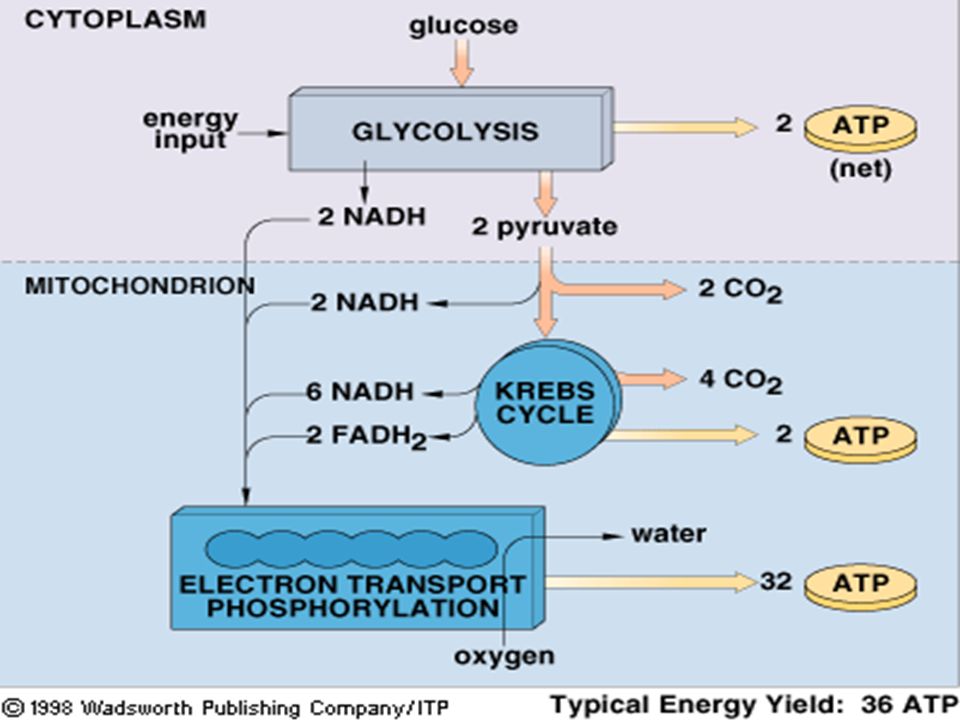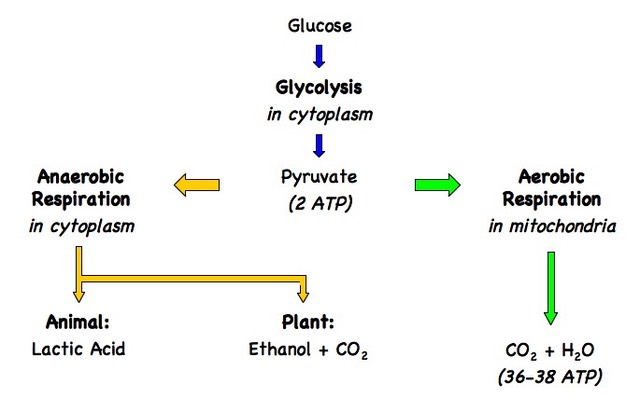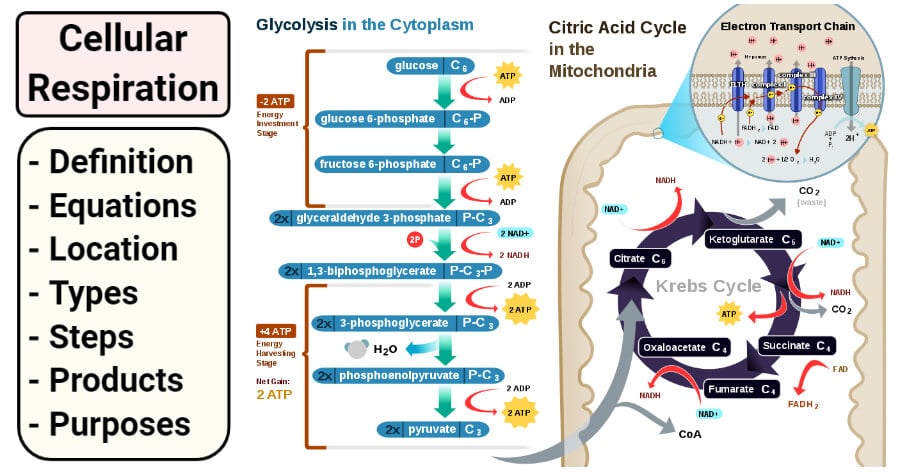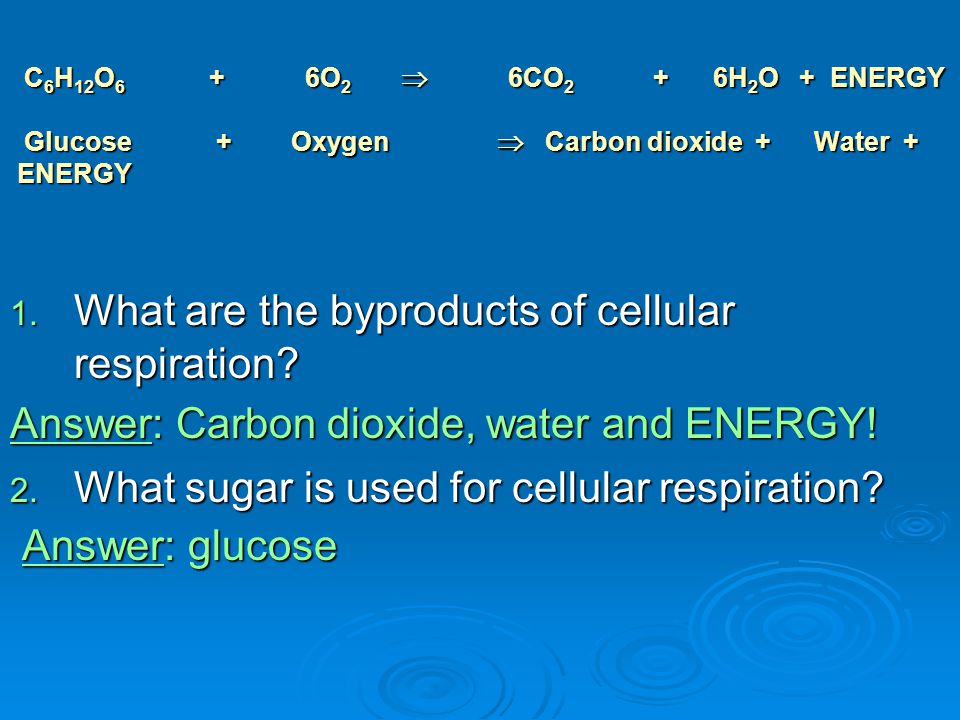Casual Cellular Respiration Byproducts

It releases chemical energy from sugars and other carbon based molecules to make ATP when oxygen is present.
Cellular respiration byproducts. In cellular respiration glucose and oxygen react to form ATP. Cellular respiration the process by which organisms combine oxygen with foodstuff molecules diverting the chemical energy in these substances into life-sustaining activities and discarding as waste products carbon dioxide and water. Tap again to see term.
Click again to see term. Cellular respiration is this process in which oxygen and glucose are used to create ATP carbon dioxide and water. Carbon dioxide and water are.
Vertebrates release carbon dioxide and water as the byproducts of cellular respiration. Pyruvate travels into the mitochondrial matrix and is converted to a two-carbon molecule bound to coenzyme A called acetyl CoA. Click card to see definition.
This molecule stores the energy released during respiration and allows the cell to transfer this energy to various parts of the cell. What are cellular respiration products. ATP is used by a number of cellular components as a source of energy.
Water and carbon dioxide are released as byproducts. Glycolysis is an anaerobic process while the other two pathways are aerobic. The overall equation for aerobic cellular respiration is.
Cellular respiration is the process by which individual cells break down food molecules such as glucose and release energy. Cellular respiration is a collection of three unique metabolic pathways. In the matrix of the mitochondria the pyruvic acid molecules get converted into two-carbon molecules and combine with.









